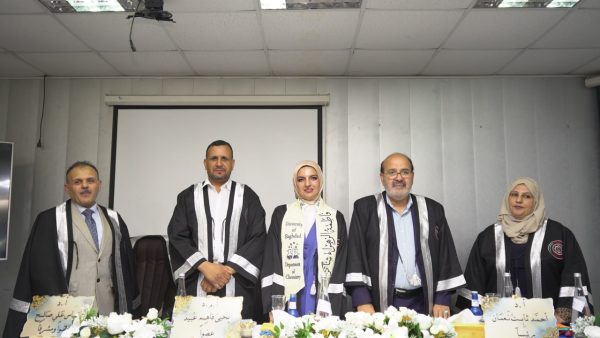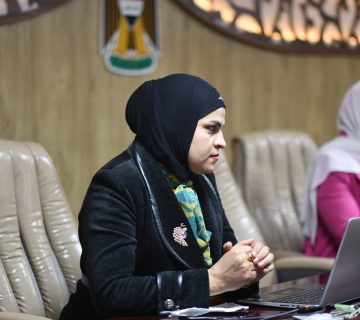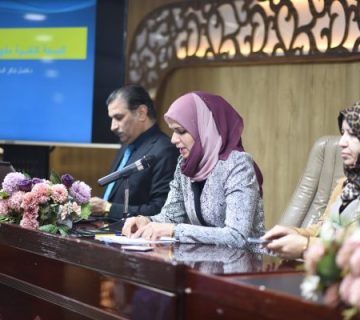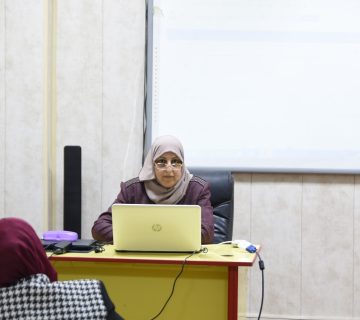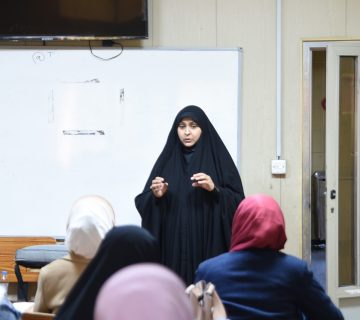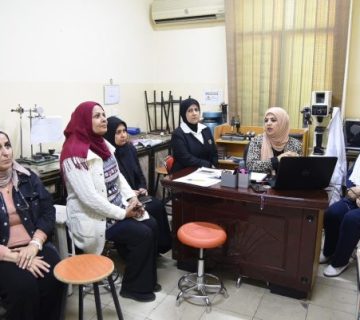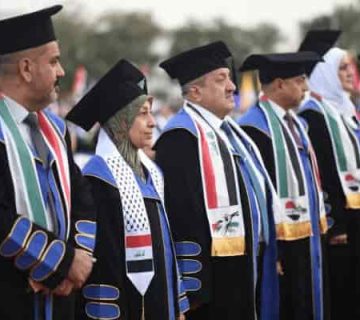The College of Science for Women at the University of Baghdad discussed the master’s thesis tagged (Synthesizing, Characterizing and Studying Different Applications of Some Metal Ion Complexes with New Azo Ligand)
Fatimah Alzahraa Shaker Hatim Ali
1.Preparation of a new organic azo ligand and its diagnosis using available spectroscopic and diagnostic methods (infrared, ultraviolet-visible, mass spectrometry, proton and carbon nuclear magnetic resonance spectroscopy, and precise element analysis in addition to the melting point).
- Use the prepared azo ligand to prepare a series of complexes with salts of some metal ions for (nickel, cadmium, manganese, zinc, copper, cobalt, divalent palladium, chromium, trivalent iron, vanadium, quadrivalent platinum, and hexavalent molybdenum) and diagnose the complexes with techniques (infrared, ultraviolet rays). Visible-violet, mass, thermogravimetric decomposition curve, precise element analysis, proton nuclear magnetic resonance, molar conductivity, magnetic susceptibility, chlorine content and metal percentage, as well as melting point)
- Determine the most stable geometric shape according to diagnostic techniques for the prepared compounds.
- Study of thermal analysis of all complexes prepared using the TGA technique to determine the stability, purity, and stages of decomposition of the complexes, along with a study of the thermodynamic constants (enthalpy, entropy, and compression free energy) via the DSC curve.
- Study the ability of the prepared compounds (the ligand and its complexes) as antioxidants using ascorbic acid as a reference and DPPH as a free radical.
- Studying the effectiveness of zinc and iron complexes at two different concentrations as antifungals for two types of fungi (and Trichoderma Aspergillus).
- Study of the effectiveness of zinc, iron and copper complexes at five different concentrations as antioxidants for breast cancer (MCF7).
This study, which was conducted at the University of Baghdad – College of Science for Women – Department of Chemistry – Inorganic Laboratory in Baghdad, Republic of Iraq, for the period from July 2023 until October 2023, included the preparation of a new azo ligand. The ligand was used in preparing a series of complexes for each of the ions (nickel, cadmium, manganese, and zinc). And copper, cobalt, divalent palladium, chromium, trivalent iron, vanadium, quaternary platinum, and hexavalent molybdenum), and diagnosing complexes using techniques (infrared, ultraviolet-visible, mass, thermogravimetric decomposition curve, precise element analysis, proton nuclear magnetic resonance, molar conductivity, Magnetic susceptibility, chlorine content and metal percentage, as well as melting point), and evaluation of the biological activity of both the ligand and the prepared complexes.
The most important recommendations reached by the letter are
- New complexes of the azo ligand can be prepared with the lanthanide and actinides elements.
- Studying aspects of the biological effectiveness of complexes prepared for other types of fungi in detail (in multiple concentrations) and comparing them with some drugs on the same ring groups for the possibility of using them in the pharmaceutical field and benefiting from them in the pharmaceutical industry.
- Preparation of new ligands by replacing the additive group (3-amino phenol) with any phenolic substance to prepare a series of new ligands.
- Study of the prepared compounds against other cancer lines (colon, prostate, skin…etc.)
